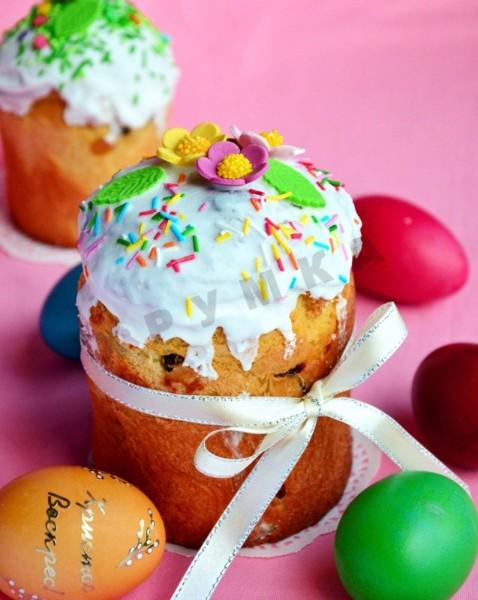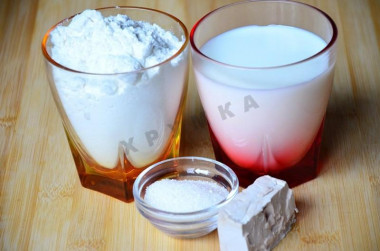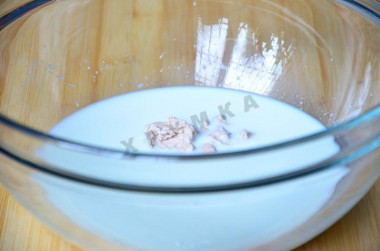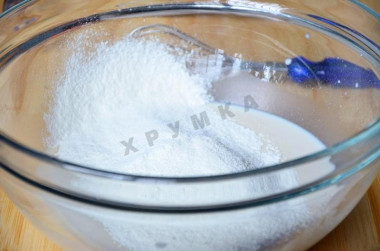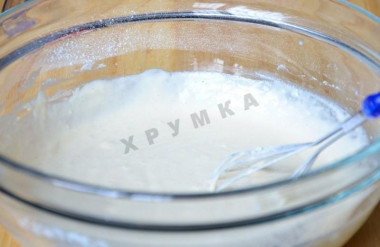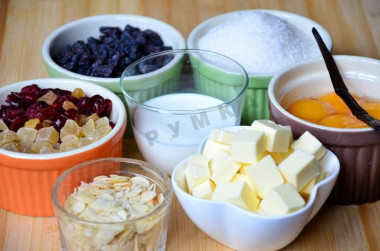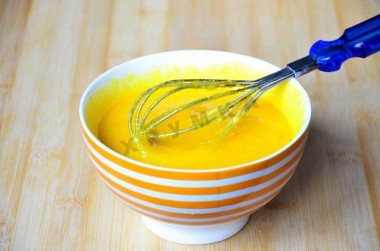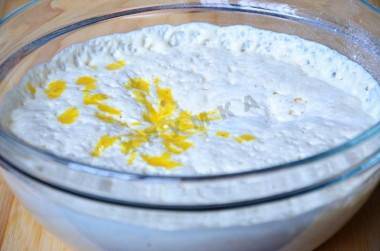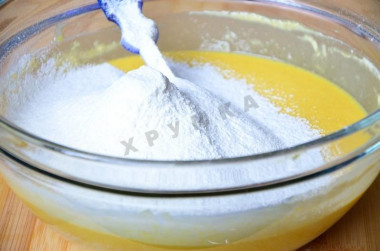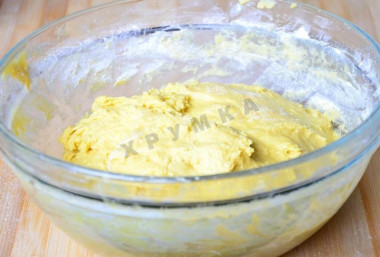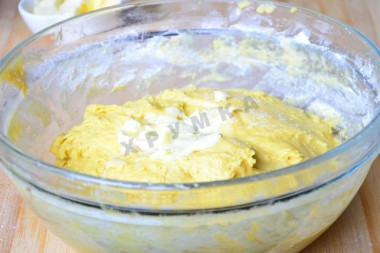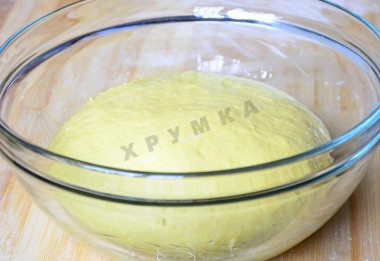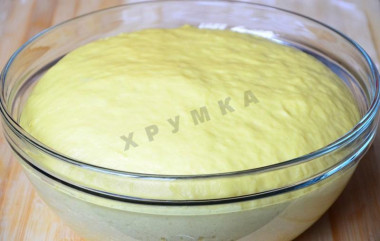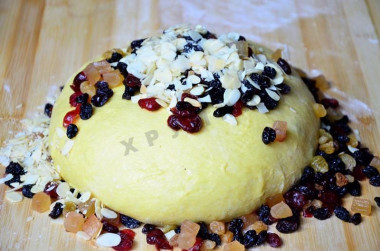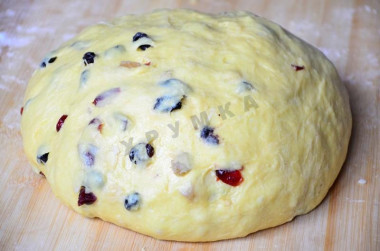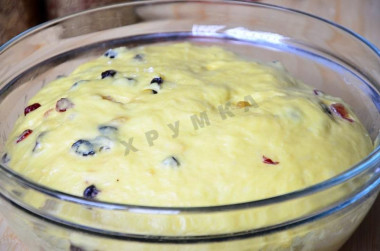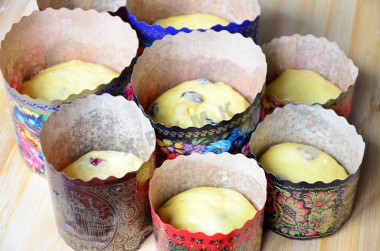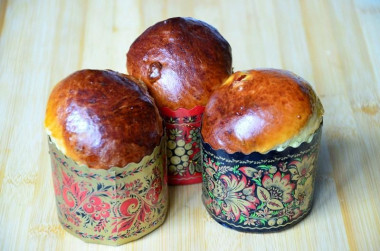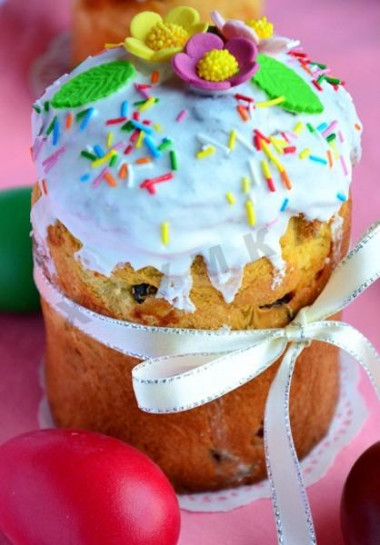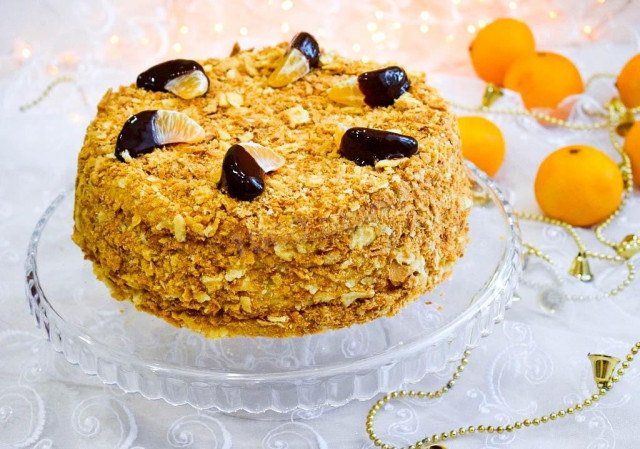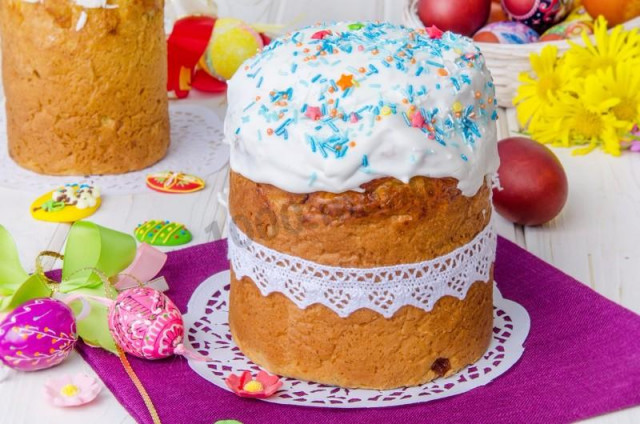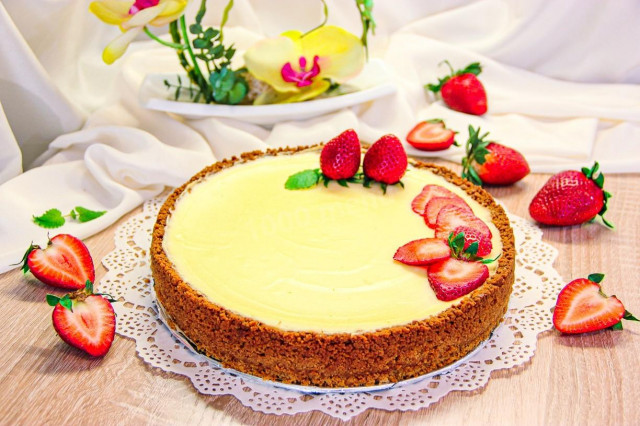Composition / ingredients
Step-by-step cooking
Step 1:
Ingredients for sourdough.
Step 2:
Dilute yeast in warm milk, add 1 tbsp sugar, mix thoroughly.
Step 3:
Add 180 g of sifted flour (about 1.5 cups of 200 ml)
Step 4:
Stir well, the dough should turn out like pancakes. Cover the dough with a towel or a film and put it in a warm place to rise for 1 hour. During this time, the sourdough should bubble up and increase 2-3 times.
Step 5:
Ingredients for the pastry part (I forgot to put vegetable oil in the photo, but it is not necessary to use it).
Step 6:
Rub the egg yolks with sugar, vanilla seeds (or just vanilla sugar) and a pinch of salt.
Step 7:
Add the crushed yolks and cream to the approaching sourdough (I used 15%, the cream should be at room temperature).
Step 8:
Mix well. Adding flour in small portions, knead the dough.
Step 9:
The dough should turn out very soft and a little sticky, it is very important not to overdo it with flour. Flour may be required and more than the ingredients, the most important thing is to focus on the dough, it should be soft, if it sticks a little, it's okay, we'll still knead!
Step 10:
Now the dough for the cakes must be thoroughly kneaded. Kneading, add small portions of soft butter first, then vegetable (just pour a little into your hand) and so on until it's over. We knead it for a long time and thoroughly (this process took me 30 minutes if not more). The easiest way is to mix the oils directly in the bowl, but then someone has to hold this very bowl, at the same time interfere and keep the work is not easy)
Step 11:
After all the oil has been mixed in, we go to the work board and hang the dough in a smooth, tender bun. If necessary, we dust the table a little with flour. The finished dough is sent to a bowl and sent to a warm place to rise for 1-1.5 hours.
Step 12:
Knead the finished dough.
Step 13:
We spread it on the work surface. Spread the washed and dried dried fruits and nuts on the dough.
Step 14:
Gently mix dried fruits into the dough.
Step 15:
And again we send the dough to rise for 1 hour. We divide the finished dough into parts, roll it into buns and put it into prepared molds.
Step 16:
I used paper molds, just greased the molds with butter and spread the dough in them. We leave the cakes to rise for 20-30 minutes. Before baking, grease the cakes with beaten egg and bake in a preheated 180 C oven for about 20-40 minutes, depending on the size.
Step 17:
These are such cute and very tender cakes. These are the smallest molds with a volume of about 300 ml, I baked them for about 17-20 minutes. Let the finished cakes cool down and decorate to taste. And you can leave it like that, it still turns out very tasty!
Step 18:
Happy Easter to you. Enjoy your meal!
Caloric content of the products possible in the composition of the dish
- Whole cow's milk - 68 kcal/100g
- Milk 3.5% fat content - 64 kcal/100g
- Milk 3.2% fat content - 60 kcal/100g
- Milk 1.5% fat content - 47 kcal/100g
- Concentrated milk 7.5% fat content - 140 kcal/100g
- Milk 2.5% fat content - 54 kcal/100g
- Buttermilk - 36 kcal/100g
- Cream of 20% fat content - 300 kcal/100g
- Cream of 10% fat content - 120 kcal/100g
- Cream - 300 kcal/100g
- Pressed yeast - 109 kcal/100g
- Granulated sugar - 398 kcal/100g
- Sugar - 398 kcal/100g
- Butter 82% - 734 kcal/100g
- Amateur unsalted butter - 709 kcal/100g
- Unsalted peasant butter - 661 kcal/100g
- Peasant salted butter - 652 kcal/100g
- Melted butter - 869 kcal/100g
- Vegetable oil - 873 kcal/100g
- Salt - 0 kcal/100g
- Wheat flour - 325 kcal/100g
- Vanilla pod - 287 kcal/100g
- Egg yolks - 352 kcal/100g
- Chicken egg - 80 kcal/100g
- Dried fruit mixture - 250 kcal/100g
- Almond petals - 650 kcal/100g

